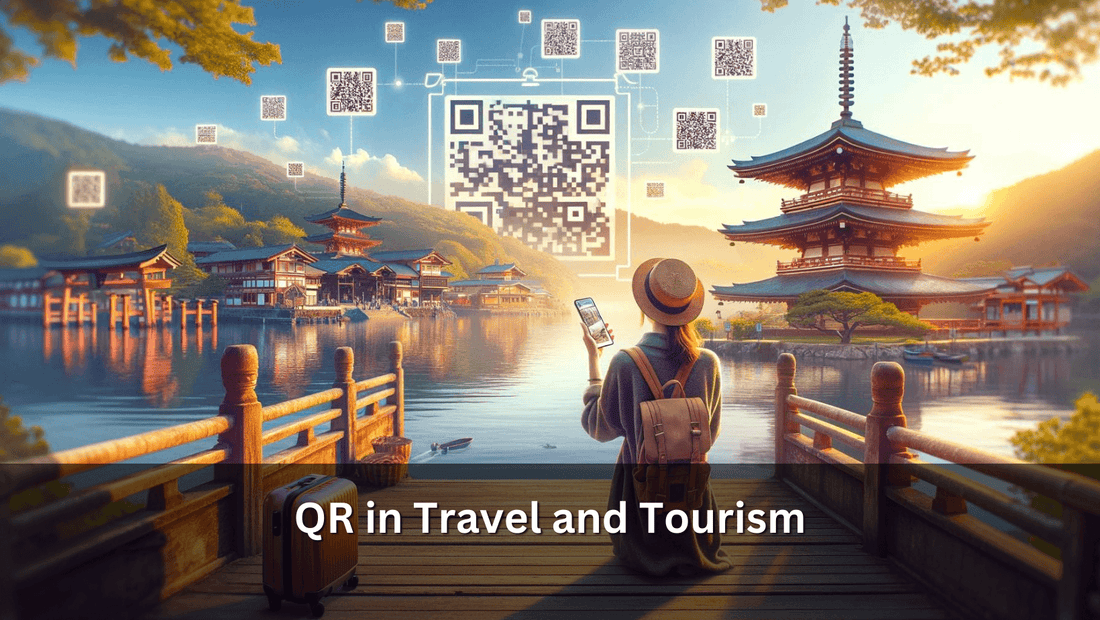QR Codes in Travel: A Modern Tourism Guide

Introduction
In the realm of travel and tourism, QR codes have become a pivotal technology, transforming how destinations interact with visitors. This guide delves into the myriad ways QR codes enhance travel experiences, providing ease and engagement for tourists while presenting a sustainable, cost-efficient strategy for service providers. By facilitating access to comprehensive information, supporting diverse languages, and promoting local attractions with a simple scan, QR codes are redefining the dynamics of travel. Their deployment in cities worldwide not only aids in making destinations more welcoming but also optimizes the operational aspects of tourism management, heralding a new era of digital convenience in travel.
The Catalyst of Convenience: QR Codes in Tourism
Enhancing Speed and Accessibility
QR codes have fundamentally transformed the accessibility of information for tourists, offering a direct gateway to instant knowledge with a mere scan. This innovation has significantly streamlined the travel experience, abolishing the traditional reliance on physical brochures and cumbersome maps. Tourists now enjoy an enhanced ease of navigation, gaining immediate insights into local attractions, directions, and historical contexts. This advancement not only makes travel more efficient but also ensures that explorers can fully immerse themselves in their surroundings without the logistical barriers that once hindered the spontaneity and depth of their experiences.
Versatility and Engagement
The utility of QR codes in tourism extends far beyond simple information retrieval; they are a portal to a more engaging and immersive travel experience. Through QR codes, visitors can unlock interactive tours that guide them through the narratives of historical sites, participate in scavenger hunts that explore the hidden gems of a city, or even access augmented reality (AR) features that bring cultural heritage to life. Additionally, these codes streamline practical aspects of travel, such as instant ticket bookings and accessing up-to-date event schedules, further personalizing the journey. This versatility not only caters to the diverse interests of travelers but also fosters a deeper connection with the destinations they visit, enriching their adventures with layers of interaction and discovery.
Empowering Tourism with Practical Applications
Bridging Language Gaps and Celebrating Diversity
In the realm of international travel, QR codes emerge as a key tool for fostering inclusivity and accessibility. By providing tourists with the ability to instantly access information in their preferred language, QR codes help bridge the communication divide, ensuring that language barriers do not diminish the travel experience. This feature is especially beneficial in promoting cultural understanding and appreciation, as it invites travelers to delve into local heritage, traditions, and community events with ease. Through QR codes, destinations can showcase their cultural richness and diversity, offering an inviting and inclusive atmosphere that encourages exploration and participation.
Sustainable Solutions and Data Insights
The implementation of QR codes in tourism also marks a significant stride towards environmental sustainability. By minimizing the need for printed guides, maps, and brochures, destinations can significantly reduce their paper consumption, contributing to conservation efforts and promoting a greener approach to travel. Beyond their ecological benefits, QR codes unlock a wealth of data insights.
The integration of GPS technology and the capacity to store extensive information enable tourism operators to gather detailed analytics on visitor movements, preferences, and engagement patterns. This data is invaluable for crafting personalized experiences and optimizing services to meet the evolving needs of travelers, thereby enhancing satisfaction and loyalty. Through these practical applications, QR codes not only streamline the visitor experience but also drive the tourism industry towards more sustainable, informed, and customized practices.

Crafting and Implementing Effective QR Codes
The journey to deploying effective QR codes in tourism begins with a thoughtful creation process. Selecting the right type of QR code is critical; whether it's for a static display of information or dynamic content that updates in real-time, the choice must align with the intended purpose. The design phase is equally important, as the QR code should not only be visually appealing to encourage scans but also optimized for quick and reliable readability across various devices. Incorporating elements of your brand, such as logos or color schemes, can enhance recognition and trust.
Testing is a fundamental step that cannot be overlooked. Rigorous trials across different smartphones and scanning apps ensure that the QR code performs well in real-world conditions, preventing frustration and disengagement from users. Moreover, the deployment of QR codes should be accompanied by clear instructions or cues on how to scan them, making the technology accessible to all, regardless of their familiarity with QR codes.
Finally, integrating analytics tracking with your QR codes opens up a valuable feedback loop. By monitoring how visitors interact with your QR-coded content, you gain insights into their preferences and behaviors. This data is instrumental in refining your offerings, enabling continuous improvement of the visitor experience. Through meticulous design, testing, and data analysis, QR codes can become a powerful tool in enhancing tourism and travel experiences.









